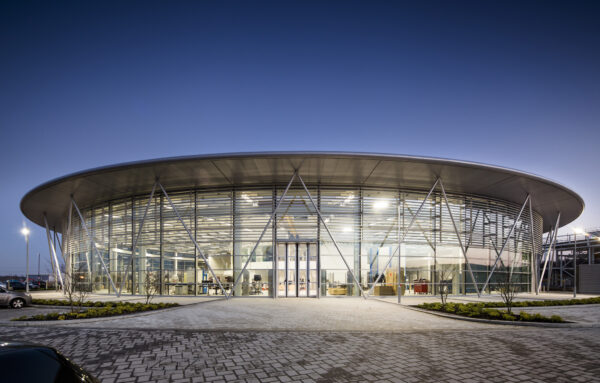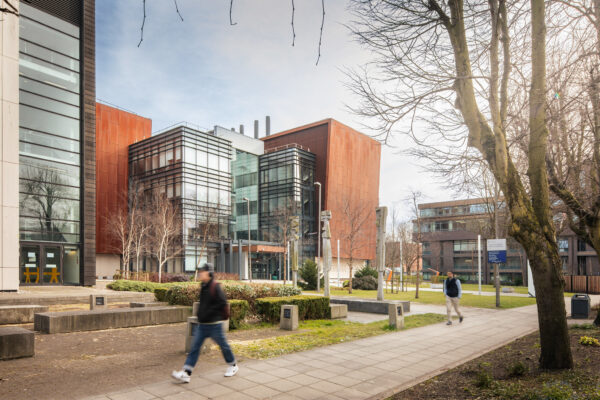Factory 2050: Ten Years of Simple, Flexible Design
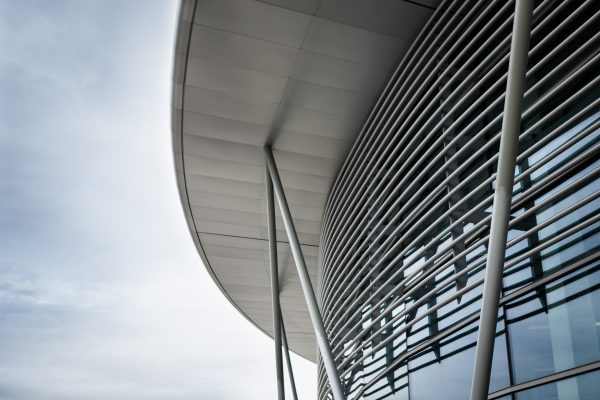
This year marks ten years since the doors first opened at Factory 2050. Built for the University of Sheffield’s Advanced Manufacturing Research Centre (AMRC), it was never meant to be just another industrial ‘box’. The challenge was clear: create a place that could keep pace with one of the fastest-moving industries in the world.
A decade later, that challenge has been met. Factory 2050 is still doing what it was designed to do – adapting quickly, supporting world-class research, and making advanced manufacturing visible and accessible. Its success comes down to one deceptively simple idea: flexibility designed in from day one.
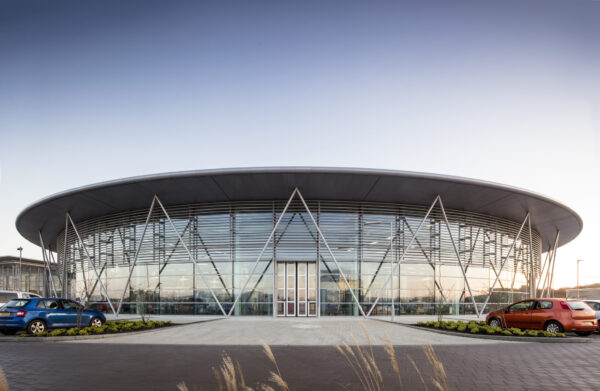
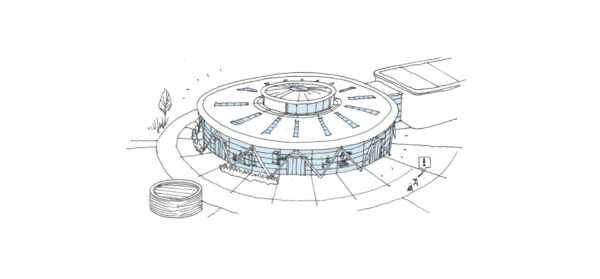
Designing for Change
In fast-moving industries, complexity is often the enemy of progress. Henry Ford’s original assembly lines changed the world not by being complicated, but by simplifying production so every step flowed into the next. Later, Toyota refined this thinking with the principle that flexibility and efficiency are two sides of the same coin.
We took the same lesson into architecture. Instead of designing for a single purpose, Factory 2050 was built to reconfigure easily and without fuss. It had to be robust, efficient, and simple to adapt – but also a place that would inspire talent and showcase innovation. That balance of practicality and presence shaped every decision.
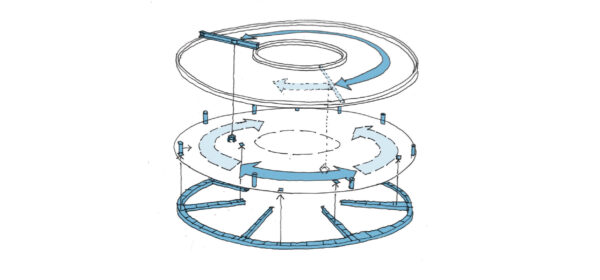
The Circular Plan
The most recognisable feature of Factory 2050 is its circular form. This wasn’t about style – it was about solving a problem. In a rectangular building, process lines eventually hit a wall. In a circle, they don’t.
That creates what we call the “infinite loop”: production lines that can grow, shrink, or shift direction without hitting dead ends. Combined with clever, hidden underfloor servicing and an innovative, rotating overhead crane system, it means equipment can be swapped or re-arranged in hours, not weeks.
It echoes a wider truth in design: sometimes the simplest geometry unlocks the most freedom. Just as Brunel’s great train sheds gave railways room to grow, the rotunda at Factory 2050 has proved itself as a quietly powerful enabler of change.

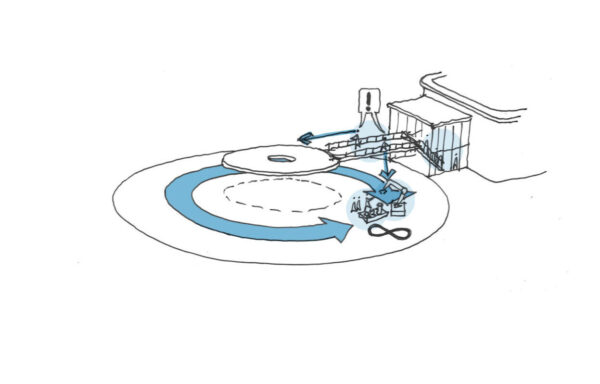
Bringing People and Processes Together
Another defining move was putting desks at the centre, with the workshop all around. This simple layout cut the distance – and the silos – between design and production. Engineers could move seamlessly between screen and shop floor.
The fully glazed façade extends the same principle outward. Natural light makes the factory a better place to work, while visitors can see in and experience advanced manufacturing for themselves. It’s a reminder of Mies van der Rohe’s line that “less is more”: transparency here does more than walls of cladding ever could.

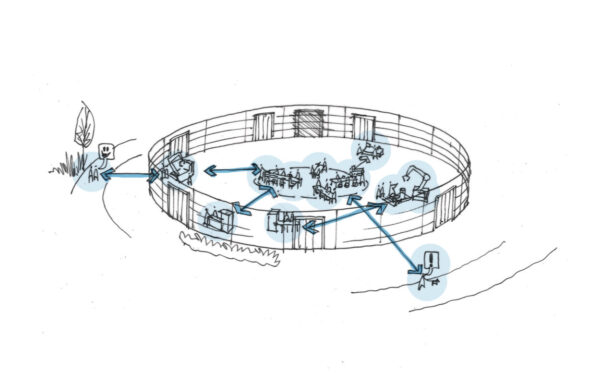
Space That Flexes
Flexibility at Factory 2050 works at every scale. The main floor can be divided into segments for confidential projects or specialist environments, without shutting down the rest of the space. And the building was designed to grow outwards when needed, with expansion points built into the structure.
That ability to flex has kept the building relevant across a decade of rapid change. From robotics and aerospace to pioneering work on small modular reactors, the same shell has been able to host cutting-edge research without costly rebuilds. It’s an approach you now see echoed in new “smart factories” around the world – proof that a simple, reconfigurable idea from 2015 was already pointing towards the future.
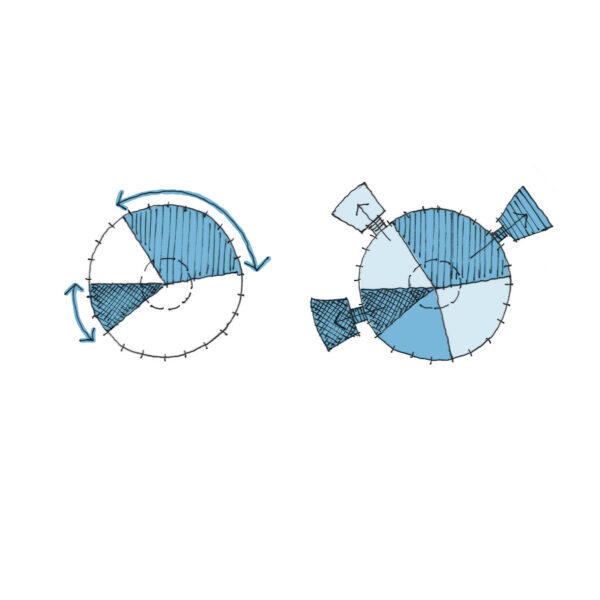
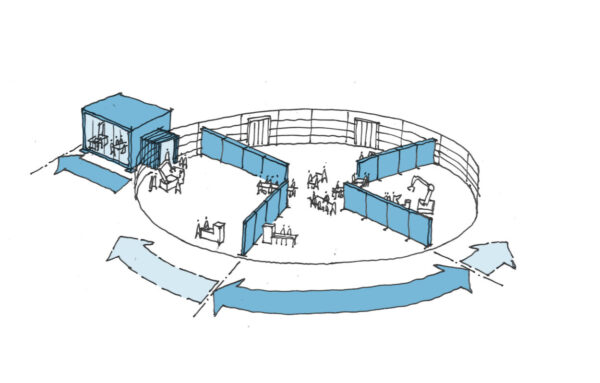
Designed for Visitors
Because Factory 2050 is both a workplace and a showcase, public access was key. The solution was simple: a raised entrance, mezzanine and viewing gallery. Visitors can see the action below without interfering with operations, while still accessing meeting rooms and events spaces.
That decision made the building more than a place to work. It became a stage for innovation – somewhere that demystifies manufacturing and makes it aspirational for the next generation.

A Solid Business Case
Ten years on, Factory 2050 shows how adaptable architecture pays for itself. By avoiding constant refits, it reduces downtime and cost. By acting as a showpiece, it attracts talent, visitors, and investment. And by flexing with its occupants, it’s stayed relevant long after most industrial buildings would have been overtaken.
There’s also a sustainability dividend. A building that can evolve avoids the waste of demolition and rebuild. As Klaus Schwab of the World Economic Forum has said, Industry 4.0 is about more than new technology – it’s about building systems that adapt continuously. Factory 2050 is proof that architecture can do the same.
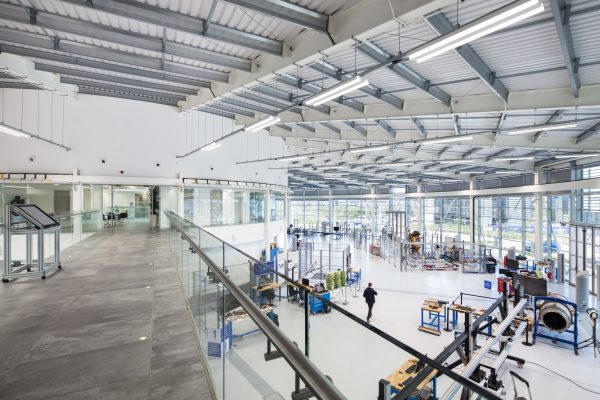
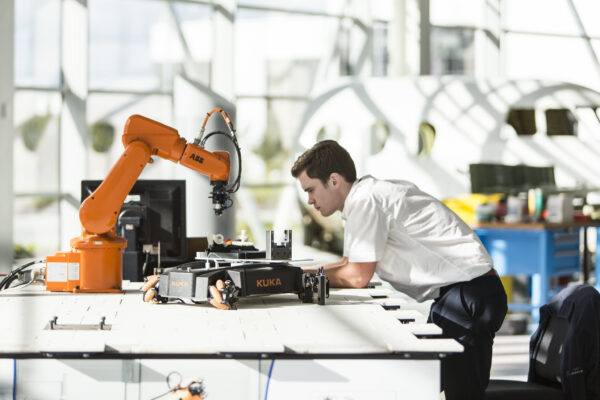
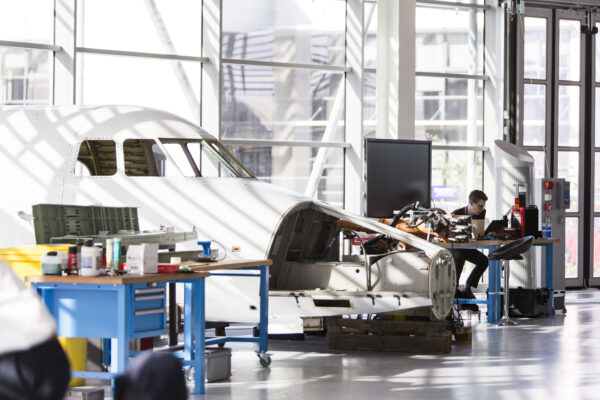
Looking Ahead
The lessons from Factory 2050 are now being carried forward at a larger scale through the Runway Park masterplan. The principle is the same: keep design simple, flexible, and people-focused, and it will stand the test of time.
If there’s one clear takeaway from the past decade, it’s this: buildings don’t need to be complicated to enable complex industries. Done well, simple and flexible design can unlock innovation, save money, and create places people are proud to work in.
